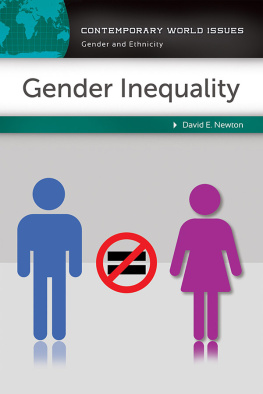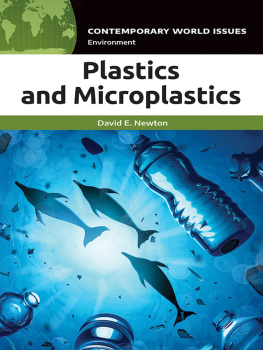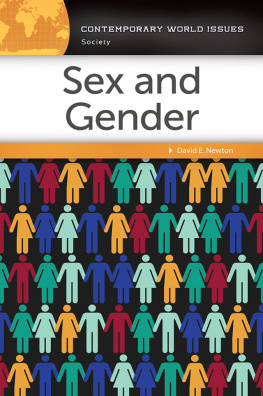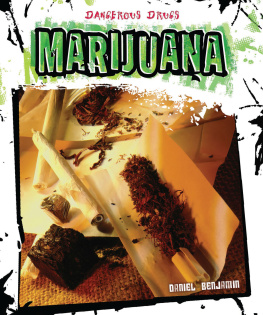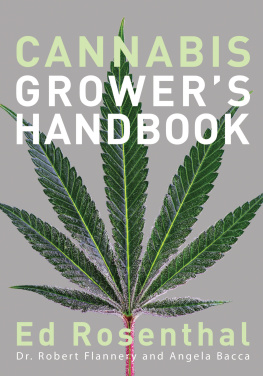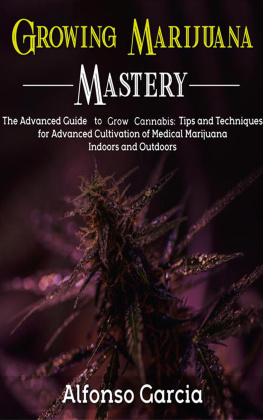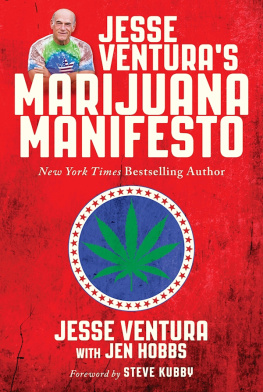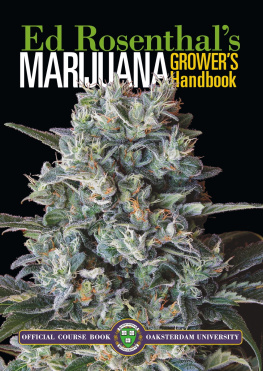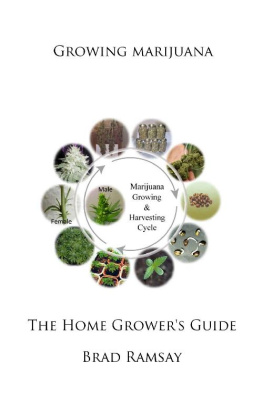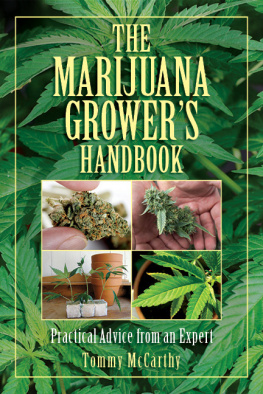David E. Newton - Marijuana: A Reference Handbook
Here you can read online David E. Newton - Marijuana: A Reference Handbook full text of the book (entire story) in english for free. Download pdf and epub, get meaning, cover and reviews about this ebook. year: 2013, publisher: ABC-CLIO, genre: Religion. Description of the work, (preface) as well as reviews are available. Best literature library LitArk.com created for fans of good reading and offers a wide selection of genres:
Romance novel
Science fiction
Adventure
Detective
Science
History
Home and family
Prose
Art
Politics
Computer
Non-fiction
Religion
Business
Children
Humor
Choose a favorite category and find really read worthwhile books. Enjoy immersion in the world of imagination, feel the emotions of the characters or learn something new for yourself, make an fascinating discovery.

- Book:Marijuana: A Reference Handbook
- Author:
- Publisher:ABC-CLIO
- Genre:
- Year:2013
- Rating:3 / 5
- Favourites:Add to favourites
- Your mark:
- 60
- 1
- 2
- 3
- 4
- 5
Marijuana: A Reference Handbook: summary, description and annotation
We offer to read an annotation, description, summary or preface (depends on what the author of the book "Marijuana: A Reference Handbook" wrote himself). If you haven't found the necessary information about the book — write in the comments, we will try to find it.
Marijuana: A Reference Handbook examines the production, consumption, and regulation of the Cannabis plant; the plants commercial, recreational, medicinal, and religious applications; and the various attempts to regulate the production and consumption...
Marijuana: A Reference Handbook — read online for free the complete book (whole text) full work
Below is the text of the book, divided by pages. System saving the place of the last page read, allows you to conveniently read the book "Marijuana: A Reference Handbook" online for free, without having to search again every time where you left off. Put a bookmark, and you can go to the page where you finished reading at any time.
Font size:
Interval:
Bookmark:
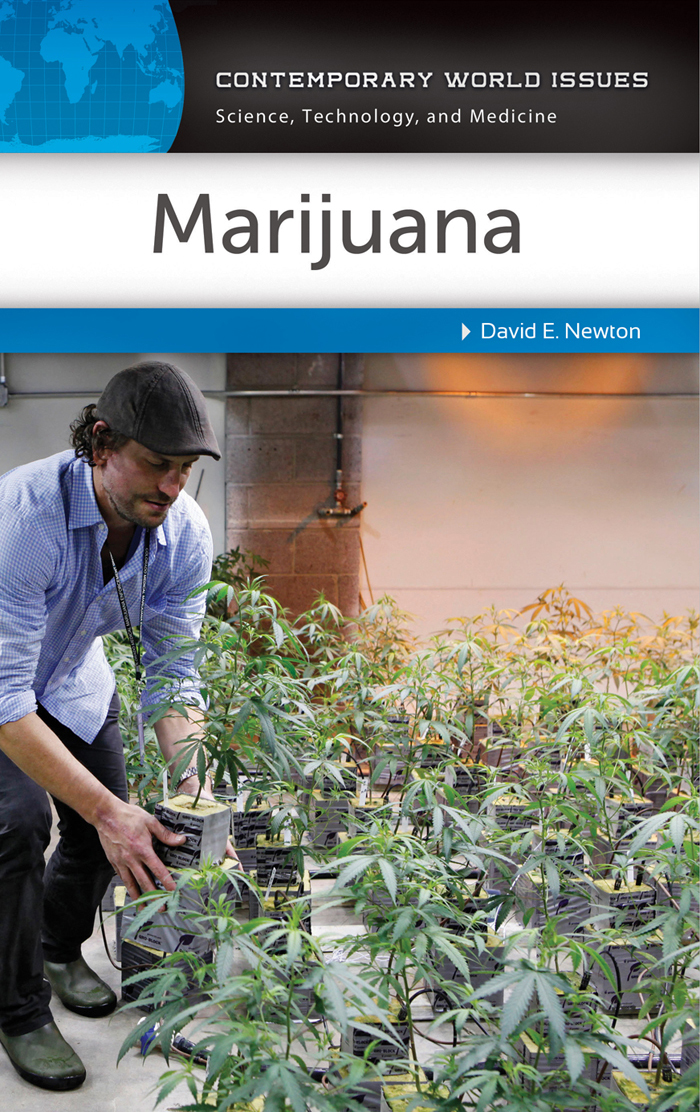
Recent Titles in the
CONTEMPORARY WORLD ISSUES
Series
CRIMINAL JUSTICE
Modern Piracy: A Reference Handbook
David F. Marley
GENDER AND ETHNICITY
Women and Crime: A Reference Handbook
Judith A. Warner
POLITICS, LAW, AND GOVERNMENT
Tax Reform: A Reference Handbook, Second Edition
James John Jurinski
Military Robots and Drones: A Reference Handbook
Paul J. Springer
SCIENCE, TECHNOLOGY, AND MEDICINE
Medical Tourism: A Reference Handbook
Kathy Stolley and Stephanie Watson
World Energy Crisis: A Reference Handbook
David E. Newton
SOCIETY
The Rising Costs of Higher Education: A Reference Handbook
John R. Thelin
World Sports: A Reference Handbook
Maylon Hanold
Books in the Contemporary World Issues series address vital issues in todays society such as genetic engineering, pollution, and biodiversity. Written by professional writers, scholars, and nonacademic experts, these books are authoritative, clearly written, up-to-date, and objective. They provide a good starting point for research by high school and college students, scholars, and general readers as well as by legislators, businesspeople, activists, and others.
Each book, carefully organized and easy to use, contains an overview of the subject, a detailed chronology, biographical sketches, facts and data and/or documents and other primary source material, a forum of authoritative perspective essays, annotated lists of print and nonprint resources, and an index.
Readers of books in the Contemporary World Issues series will find the information they need in order to have a better understanding of the social, political, environmental, and economic issues facing the world today.
A REFERENCE HANDBOOK
David E. Newton

Copyright 2013 by ABC-CLIO, LLC
All rights reserved. No part of this publication may be reproduced, stored in a retrieval system, or transmitted, in any form or by any means, electronic, mechanical, photocopying, recording, or otherwise, except for the inclusion of brief quotations in a review, without prior permission in writing from the publisher.
Library of Congress Cataloging-in-Publication Data
Newton, David E.
Marijuana : a reference handbook / David E. Newton.
p. ; cm. (Contemporary world issues)
Includes bibliographical references and index.
ISBN 9781610691499 (alk. paper) ISBN 9781610691505 (ebook)
I. Title. II. Series: Contemporary world issues.
[DNLM: 1. Cannabis. 2. Cannabinoidstherapeutic use. 3.
Government Regulation. 4. Marijuana Smokinglegislation & jurisprudence. QV 766]
615.7827dc23 2012036276
ISBN: 9781610691499
EISBN: 9781610691505
17 16 15 14 13 1 2 3 4 5
This book is also available on the World Wide Web as an eBook.
Visit www.abc-clio.com for details.
ABC-CLIO, LLC
130 Cremona Drive, P.O. Box 1911
Santa Barbara, California 93116-1911
This book is printed on acid-free paper 
Manufactured in the United States of America
Arthur Livermore
Mary Jane Borden
Douglas McVay
Benjamin Radford
Robert L. DuPont, MD
Peter Bensinger
Kevin A. Sabet
Cannabis sativa is one of the oldest crop plants known to humans. One form of the plant known as hemp has been used for the production of textiles, rope, canvas, paper, and other products for at least 6,000 years, and probably much longer. Another form of the plant, known by a variety of names such as marijuana and hashish, has been a part of religious and mystical ceremonies for just as long. It has an especially long cultural tradition in India, where the Hindu god Siva is said to have sought comfort after a family quarrel by resting under a cannabis plant and eating its leaves. The story explains Sivas alternate name of the Lord of Bhang (bhang being a particular concoction containing marijuana).
Marijuana has also been used for centuries as a recreational drug, a mind-altering substance that allows users to experience a form of the world around them often very different from that experienced in daily life. Archaeological research has found evidence of vessels apparently used for smoking marijuana that date as far back as the first millennium CE in places as widespread as China, India, Assyria, and Africa. The use of marijuana as a recreational drug persists today, with the UN Office on Drugs and Crime reporting in 2011 that there were an estimated 125 to 203 million individuals worldwide who had used the drug for recreational purposes at least once in the previous year.
For most of human history, cannabis has been held in high regard for all of these applications. It has been praised as one of the most durable, attractive, and useful of all fabrics; it has been honored as a gateway to spiritual insights; and it has been cherished as a relaxing release from the troubles of everyday life, which is not to say that questions have not been raised about possible harmful effects of the plant and its derivatives. Indeed, at the very times cannabis was most popular in some cultures as a source of clothing, a sacramental herb, or a healing medication, some individuals and groups have warned about the damage cannabis can cause to the human body and mind. At one time in ancient China, for example, laws were passed prohibiting the use of marijuana for certain purposes because in people who used it the most, it tended to bring out riotous aspects of their personalities, thus posing a possible threat to peace and order in the general society.
Such concerns have often led to conferences, conventions, and other meetings at which experts reassess the possible benefits and risks of using various forms of cannabis (usually, marijuana and hashish). Interestingly enough, these meetings have almost always concluded with a renewed statement of the many benefits provided by the cannabis plant and limited warnings about the risks of overexposure to the drug. Committee reports, like those of the Indian Hemp Drug Commission of 1895, almost always say that cannabis products do no physical, mental, or moral harm; may actually be good for you; and are safe, even far safer than many foods we commonly consume, according to one official of the U.S. Drug Enforcement Administration (DEA) in 1988.
And yet in the second decade of the 21st century, the use of cannabis and its derivatives is illegal in almost every nation in the world. Beginning in the early 20th century, a movement to change public views about the use of cannabis products began to develop, perhaps most strongly in the United States, but in other parts of the world also. International meetings, such as the International Opium Convention of 1912, were called to develop strategies for limiting or banning the production, transport, and consumption of cannabis products throughout the world. Penalties for the use of such products were severe, sometimes more severe than penalties for other major crimes, such as rape, assault, and armed burglary. Such penalties are still in existence in some parts of the world; drug trafficking can result in the death penalty in some countries, and prison sentences of up to 20 years for possession of cannabis are still place in some states of the United States.
Font size:
Interval:
Bookmark:
Similar books «Marijuana: A Reference Handbook»
Look at similar books to Marijuana: A Reference Handbook. We have selected literature similar in name and meaning in the hope of providing readers with more options to find new, interesting, not yet read works.
Discussion, reviews of the book Marijuana: A Reference Handbook and just readers' own opinions. Leave your comments, write what you think about the work, its meaning or the main characters. Specify what exactly you liked and what you didn't like, and why you think so.




